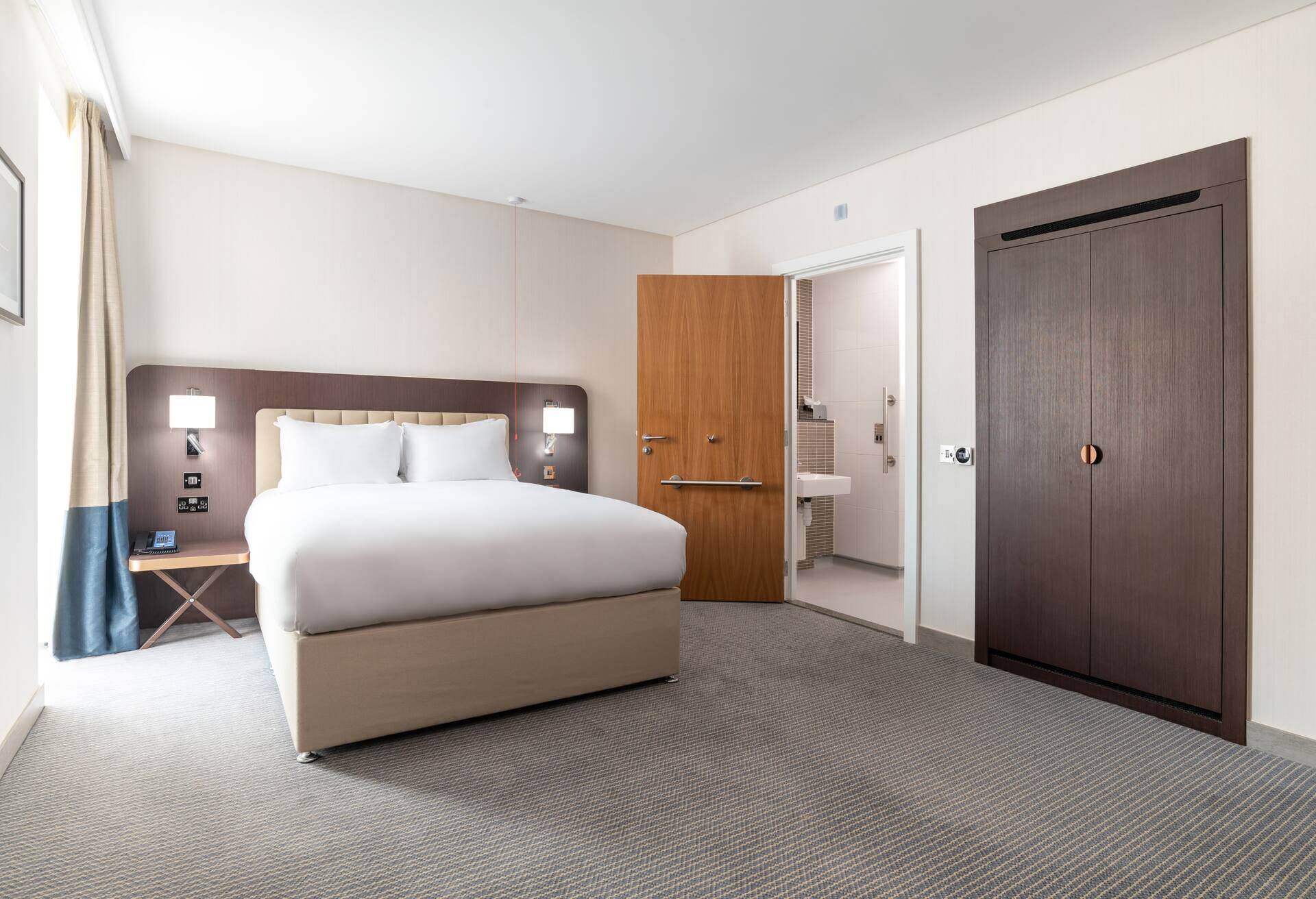What is BS8300?
BS8300 is a standard developed by the British Standards Institution (BSI) that states how a building should be designed, constructed, and maintained to create an accessible and inclusive environment for people with disabilities.
The British Standard is in place to ensure that a built environment is developed with all levels of ability in mind. All users should be able to enter, use, and exit a building easily, comfortably, and independently – particularly the disabled, less abled, or elderly. In addition, BS8300 compliant buildings contribute towards social inclusion and reduce the risk of physical harm to those using the facility.

When was BS8300 last updated?
BS8300 has been around since the Disability Discrimination Act of 1995. It was most recently updated in 2018 when the document was expanded into two parts. Part 1 focuses on building exteriors and approaches, while Part 2 remains focused on building interiors.
Previous versions of the British Standard have focused on the provision of accessibility solutions specifically for the disabled. The most recent version, BS8300-2:2018, however, goes into greater detail on how developers can build inclusive environments for all people, right from the beginning of a project. This ensures that the whole environment is accessible, rather than the topic of accessibility becoming a latter thought within a project.
BS8300-2:2018 is the first guidance to specifically address the needs of neurodivergent people. Another major addition is guidance on design strategy and the integration of design principles into the development process, which features in both parts.
What do the BS8300 guidelines cover?
BS8300’s guidelines are wide-ranging, covering almost every aspect of building design you can think of that might impact accessibility. Key aspects of accessible design addressed include the following:
- Entrances
- Door fittings
- Steps, stairs, and ramps
- WCs
- Corridors and passageways
- Surface finishes
- Visual signs
- Lighting
How does BS8300 relate to Approved Doc M?
BS8300 and Approved Doc M are closely related. While BS8300 is guidance, Approved Doc M is a guidance document that accompanies Part M of the Building Regulations in the UK. Approved Doc M provides practical guidance and sets out specific requirements for achieving compliance with the accessibility standards outlined in Part M.
However, most of the requirements set out by Approved Doc M are derived from the recommendations made in BS8300, so the latter should be referred to at the beginning of and throughout a project to ensure that good practice is followed. BS8300 provides the additional level of guidance allowing the specifier to go above and beyond the basic standard outlined in Approved Doc M.

Does BS8300 apply to accessible washrooms?
Yes, it does. In fact, 40 pages within BS8300 relate specifically to the provision of sanitary accommodation (under Clause 18).
These pages detail how a developer should create an environment that is as accessible and pleasant to use as any other bathroom facility on-site. Clause 18 includes everything from accessible routes and minimum room spaces to the appropriate positioning of hand dryers and mirrors.






_Label%20as%20this.jpg)
